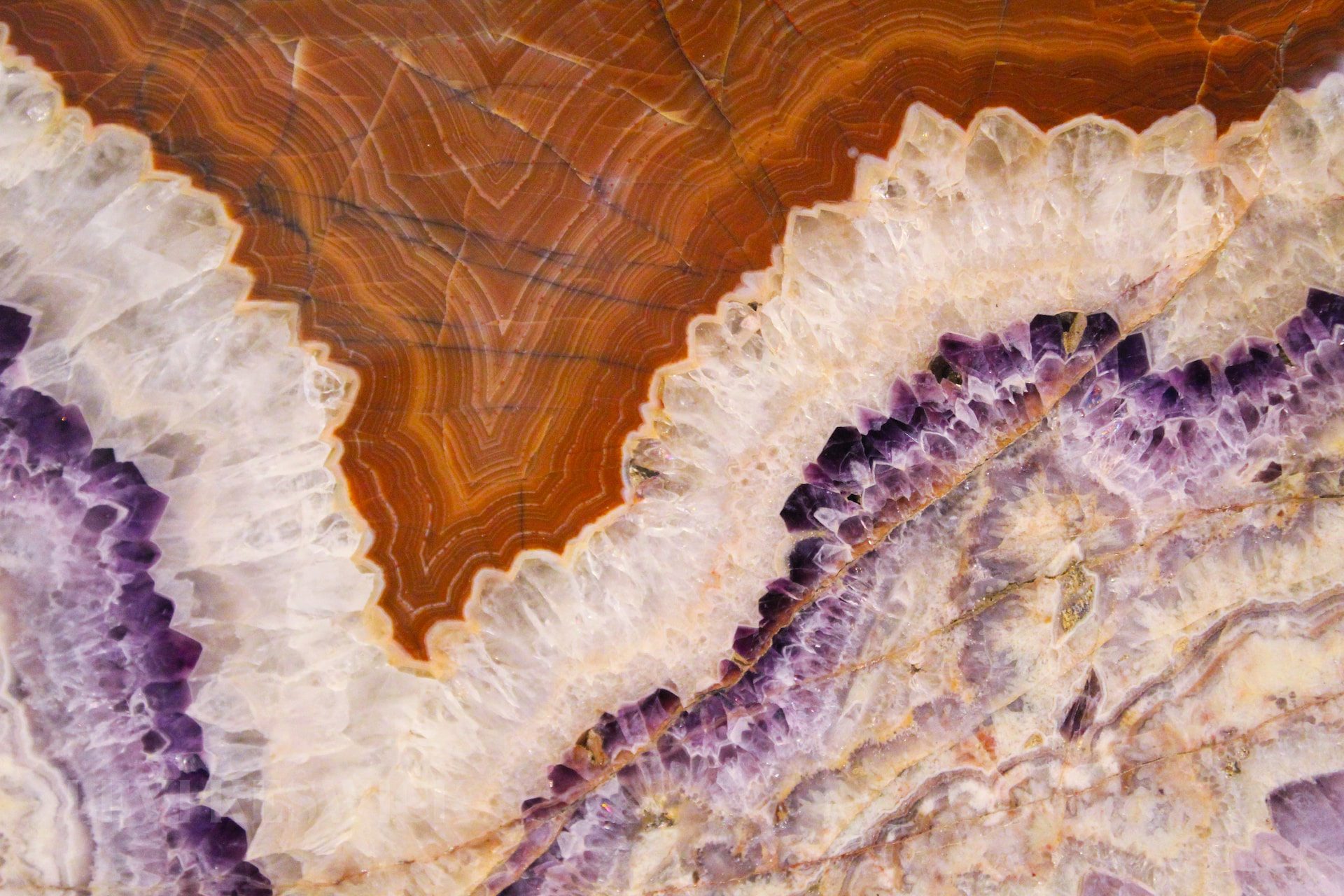Key Takeaways:
- Agate stone is a variety of chalcedony with multiple colors and patterns
- It is an affordable and versatile gemstone for jewelry use
- There are numerous types of agate stones, each with distinct features and value
- Agate stones can be dyed to enhance their colors, but this process should be disclosed to consumers
Agate Stone: A Colorful and Diverse Gemstone
Agate stone is a variety of chalcedony that is known for its beautiful and vivid colors, as well as its intriguing patterns. This versatile gemstone is perfect for various jewelry uses, thanks to its toughness and ability to take a beautiful polish. Agate stones can be found in many colors, often resulting from the traces of various elements like iron, manganese, titanium, chromium, and nickel. The variety of agate stone types, each with its unique features, makes it an appealing choice for both jewelry designers and collectors alike.
Exploring the Different Varieties of Agate Stone
Agate stones come in a wide range of varieties, primarily distinguished by their color patterns, inclusions, or sources. Some of the most popular types of agate stones include:
Banded Agate
Recognized for its regular color layers and bright hues, banded agate is among the most popular varieties. Brazil is a significant source of these stones, but they can also be found worldwide. It’s worth noting that many of the vividly colored, banded agates available in the market are dyed.
Moss, Plume, and Dendritic Agate
These agate stones contain mossy inclusions of mineral oxides in various colors. Moss agates feature plant-like patterns, plume agates have feather-like designs, and dendritic agates showcase tree-like, branching patterns.
Picture or Scenic Agate
Some agate stones have inclusions that create the appearance of entire landscapes, complete with lakes, shorelines, trees, and shrubs. These “natural pictures” make these stones highly treasured among collectors.
Fire Agate
Fire agates are iridescent due to inclusions of plate-like crystals of limonite. The cutting and polishing process can enhance this effect, making these stones visually striking.
Lace Agate
Characterized by delicate and intricate swirls and loops, lace agate is a beautiful variety, with Mexico being one of its primary sources.
Iris Agate
Iris agates exhibit iridescent colors that reflect from between the color layers, adding an extra dimension of beauty to these stones.
Shell Agate
In shell agates, silicified shells create unique patterns. Turritella agate, for example, consists mostly of shells and shell fragments from specific gastropod species.
Petrified Wood
Over millions of years, fossilized tree trunks and limbs may have their organic components replaced by agate stone. In some cases, their woody structure may be preserved and visible under a microscope, adding to the stone’s appeal.
Agate Stone Price Per Gram and Enhancements
The agate stone price per gram depends on factors like the type, color, patterns, and inclusions. Generally, agate stones are considered affordable, making them an attractive option for various jewelry uses.
Dyeing is a common enhancement practice for agates due to their porous nature. The process, which has been around for centuries, is usually stable. One of the most famous dyeing techniques was developed in Idar-Oberstein, Germany, in the 19th century. After local agate deposits were depleted, grey agates from South America were shipped to Idar-Oberstein, where they underwent dyeing, producing extraordinary results. It’s essential to disclose dyeing enhancements to consumers, as it can impact the value and desirability of the stone.
Tips for Buying Agate Stone Jewelry
When purchasing agate stone jewelry, consider the following factors to ensure you’re making an informed decision:
- Type of agate: Determine which type of agate appeals to you the most, whether it’s banded, moss, fire, or lace. Each variety has its unique characteristics and value.
- Color and patterns: Choose an agate stone with colors and patterns that resonate with your personal style and preferences. Keep in mind that some agate stones may be dyed to enhance their colors.
- Transparency and inclusions: Agate stones can range from opaque to translucent or even transparent. The presence of inclusions may also affect the stone’s appearance, so make sure to inspect the stone closely before purchasing.
- Size and cut: The size and cut of the agate stone can impact its price and overall appearance. Consider the desired size for your jewelry piece and whether you prefer a cabochon, faceted, or carved design.
- Enhancements: As mentioned earlier, agate stones can be dyed to enhance their colors. Ensure that any enhancements have been disclosed by the seller, as this can influence the stone’s value.
- Quality of craftsmanship: When purchasing agate stone jewelry, pay attention to the quality of the metalwork and any additional gemstones included in the design. A well-crafted piece of jewelry will be more durable and enjoyable to wear.
By understanding the various types of agate stones and their unique features, as well as being aware of enhancements like dyeing, you can make an informed decision when purchasing agate stone jewelry. The affordability and diversity of agate stones make them an appealing option for anyone looking to add a touch of color and intrigue to their jewelry collection.








